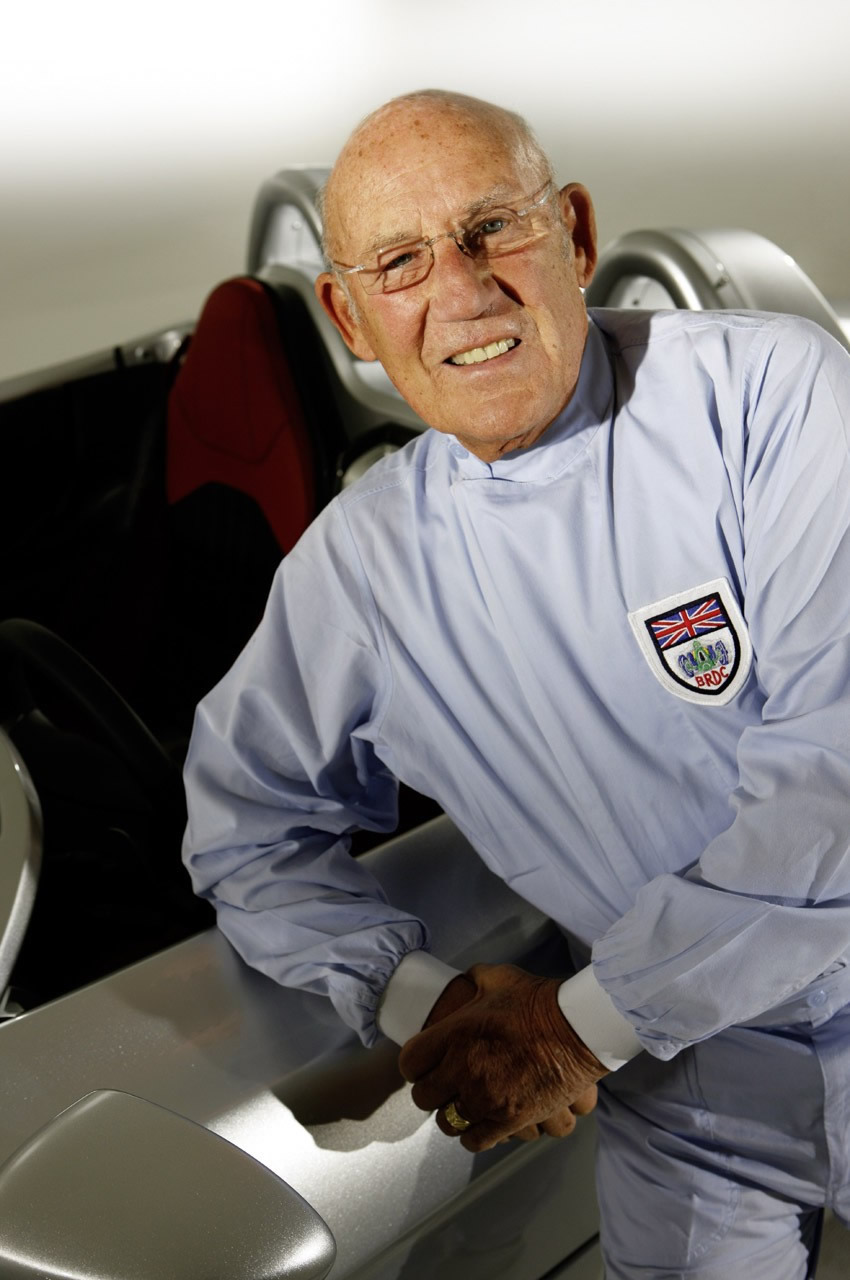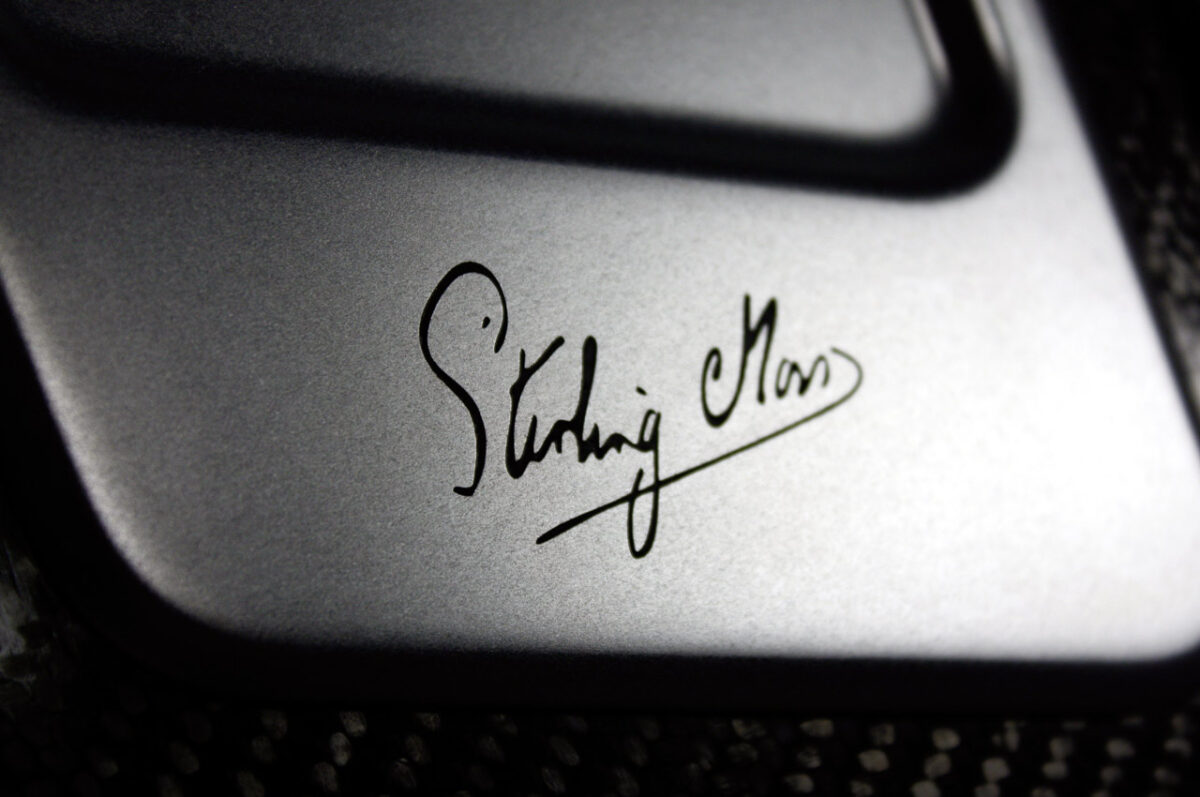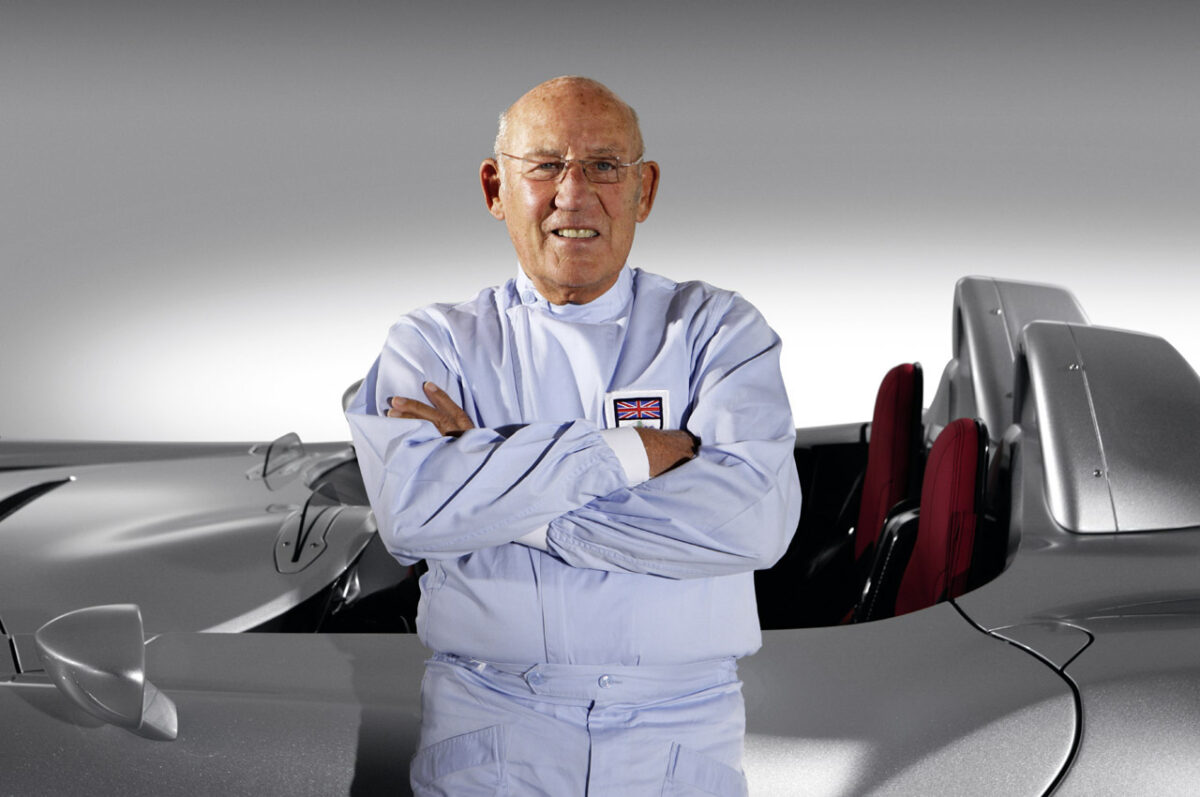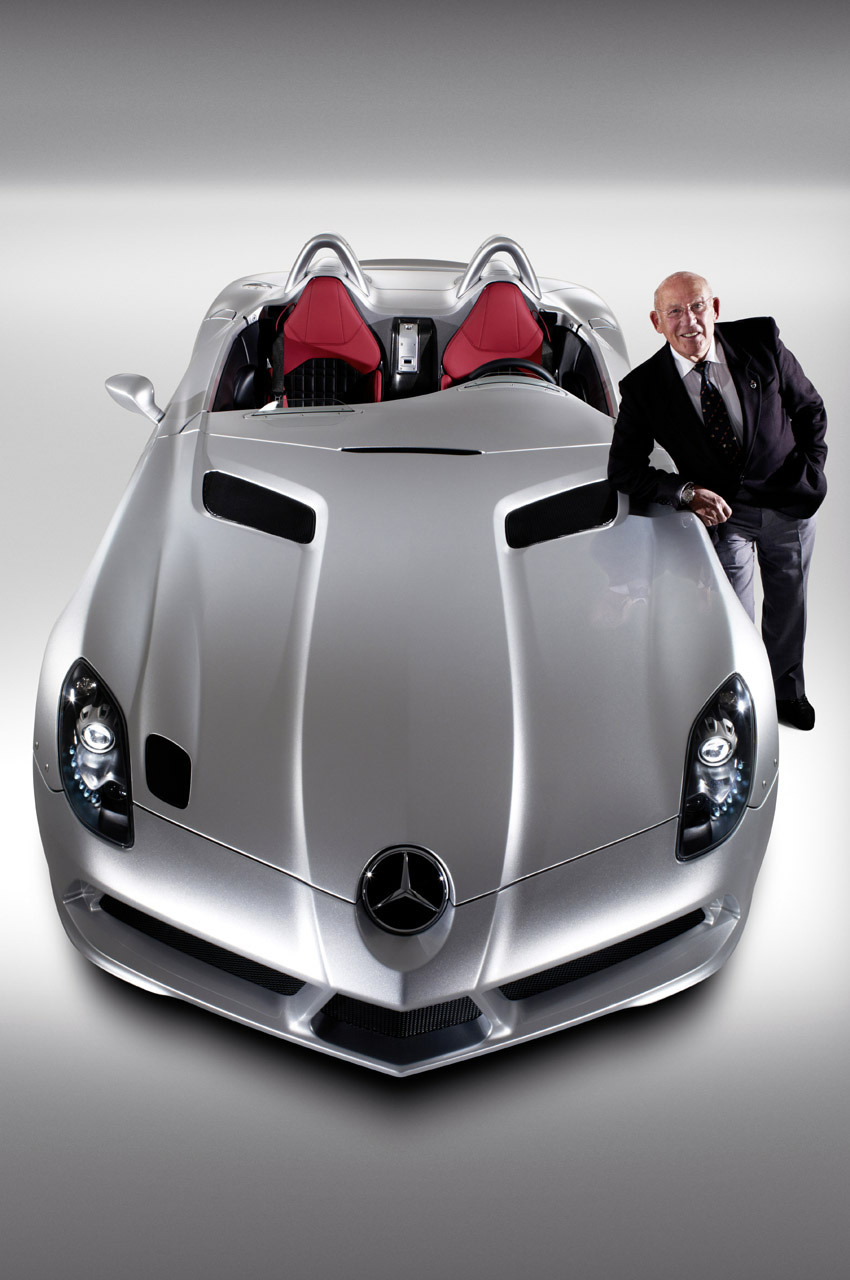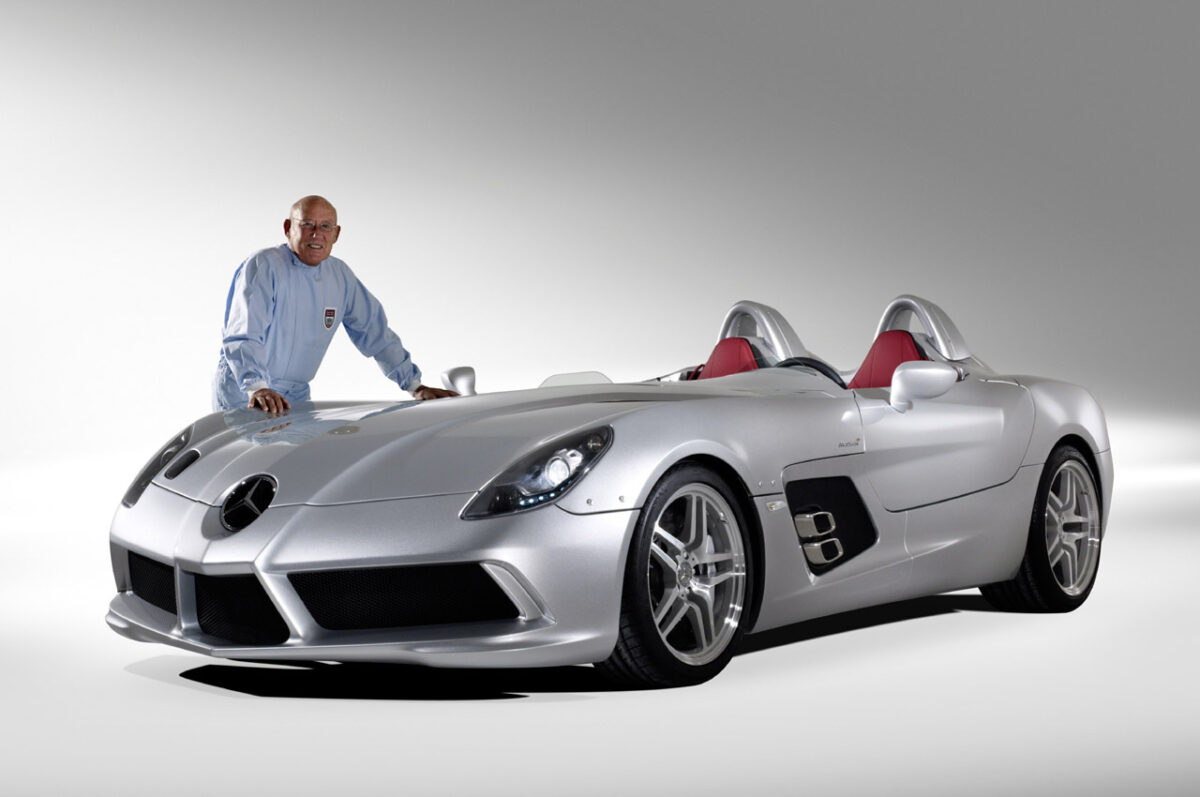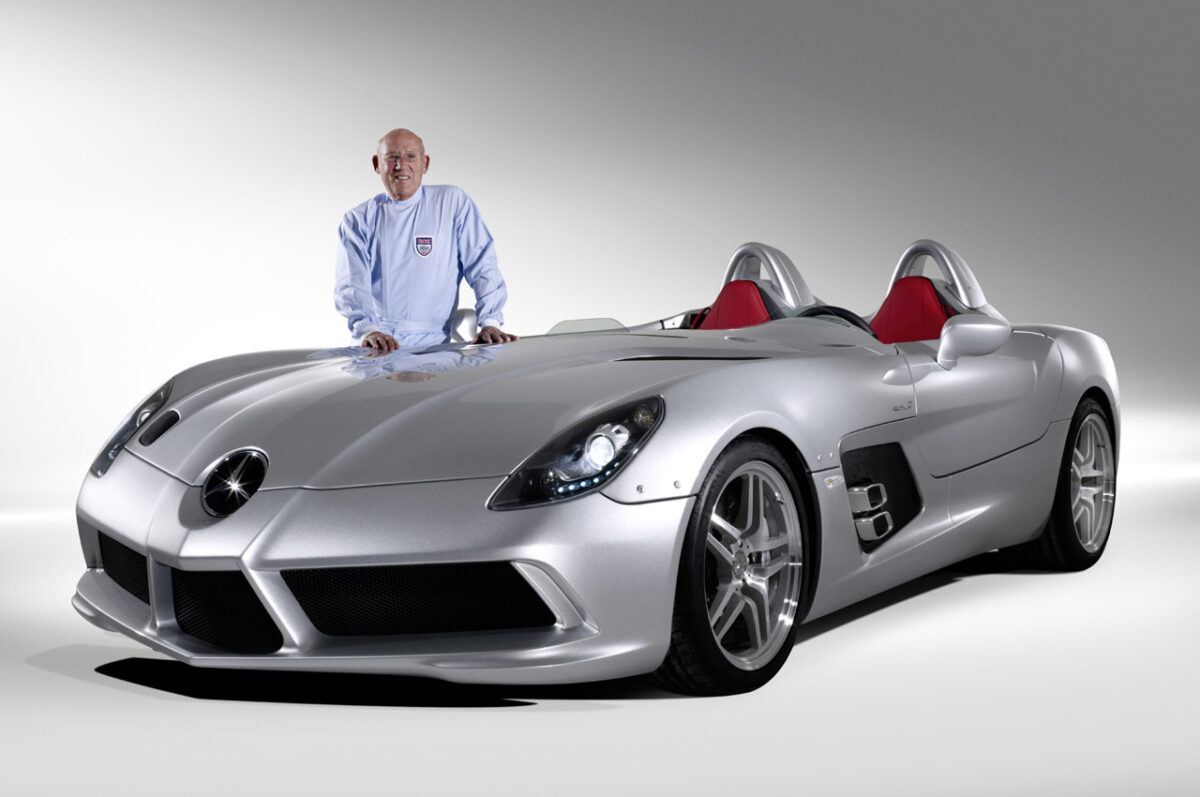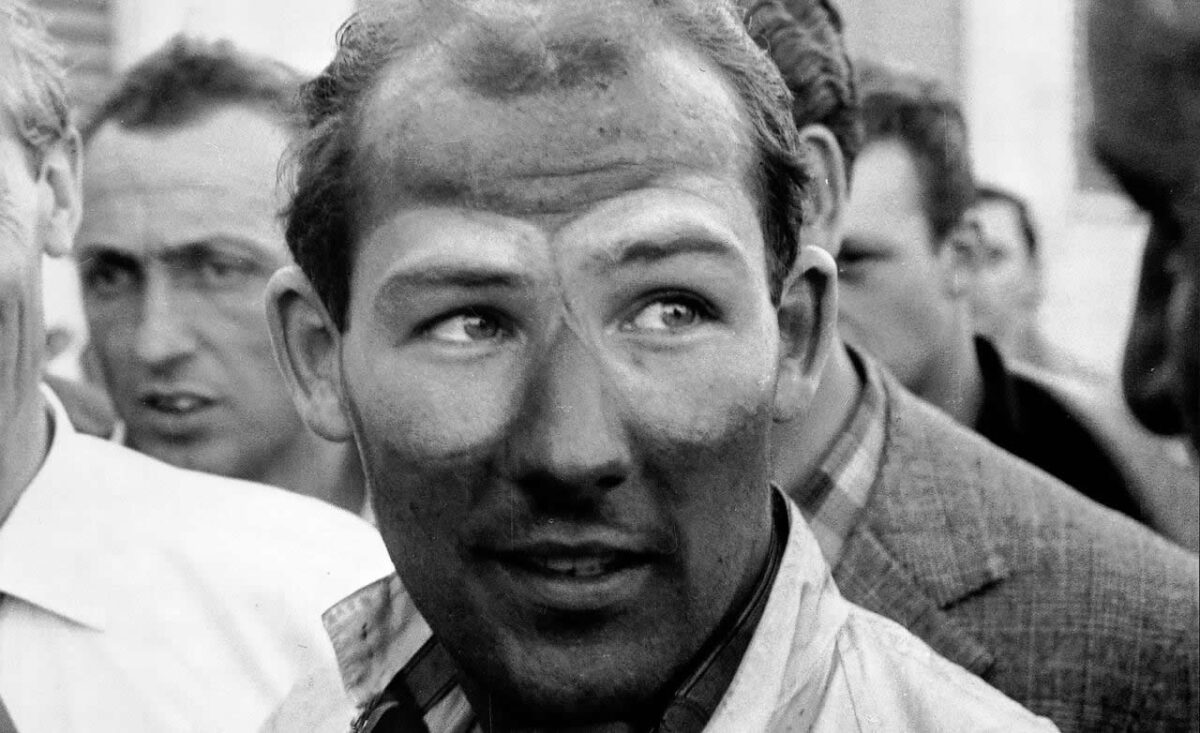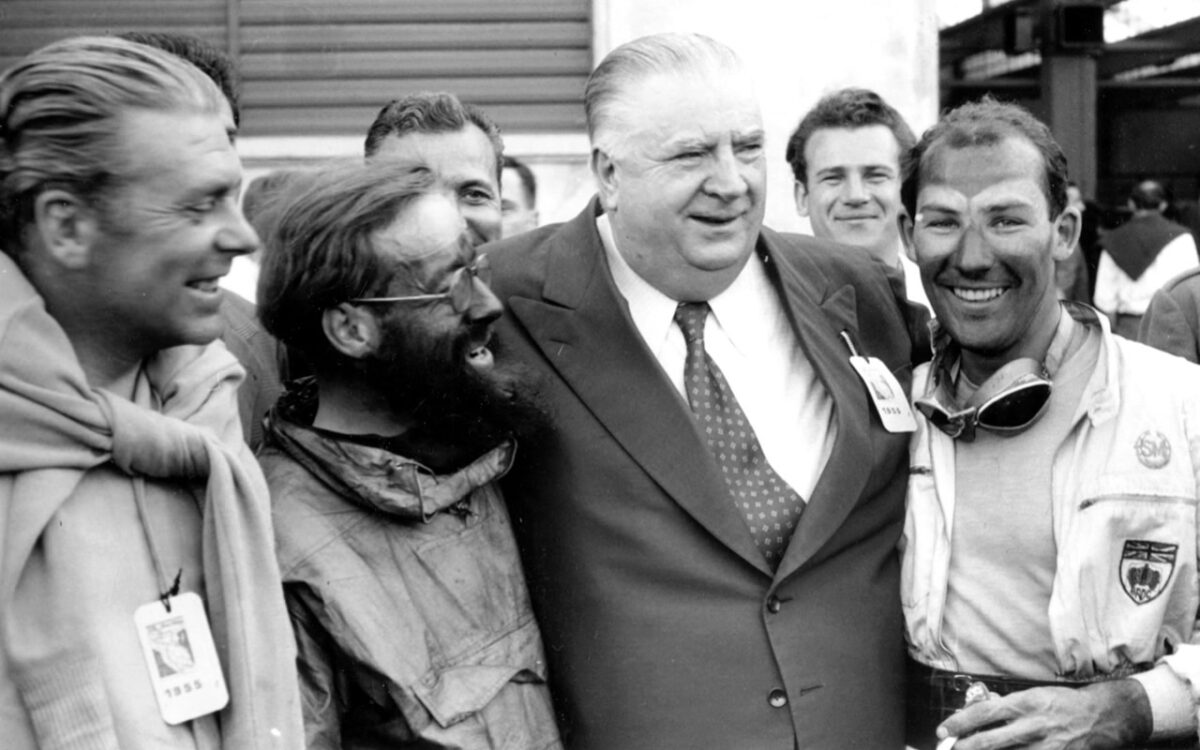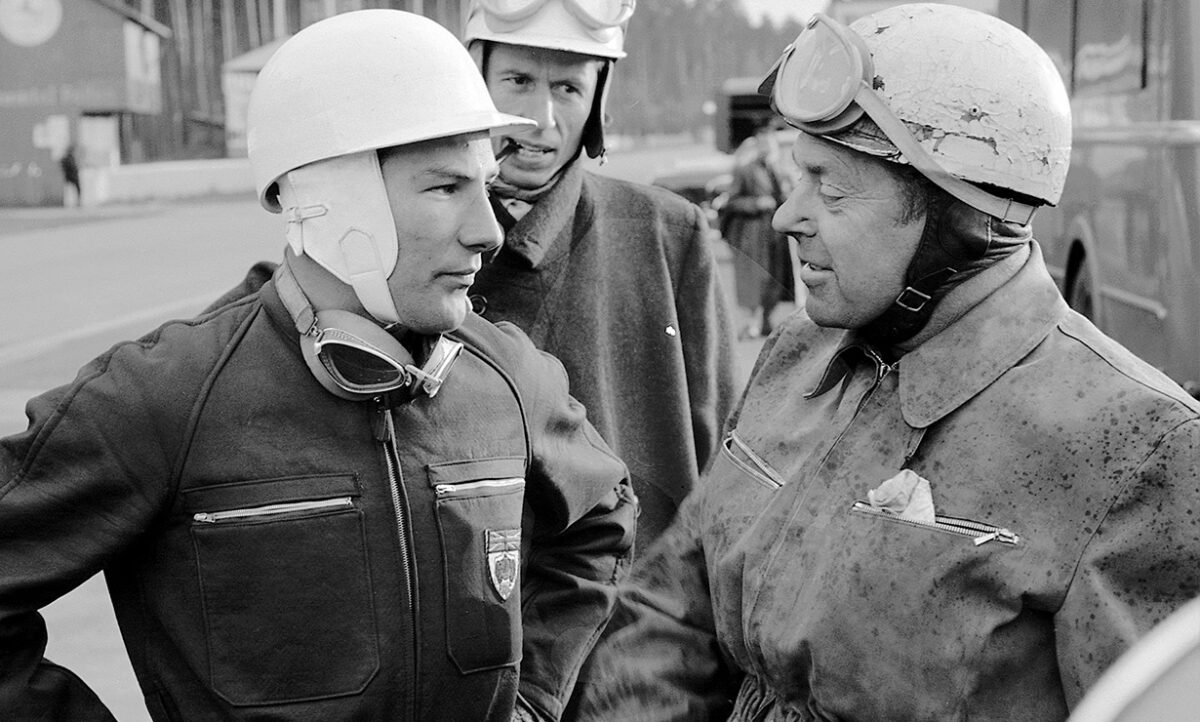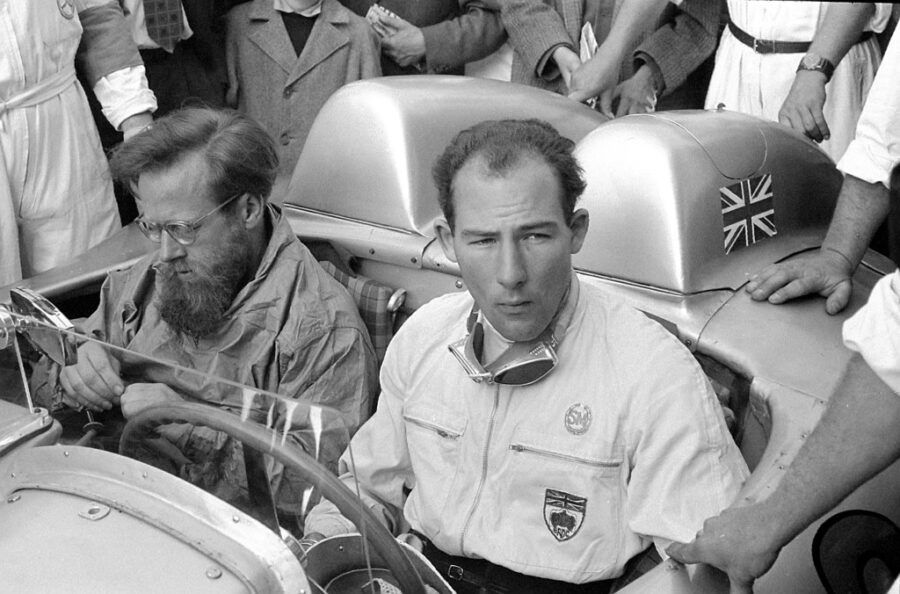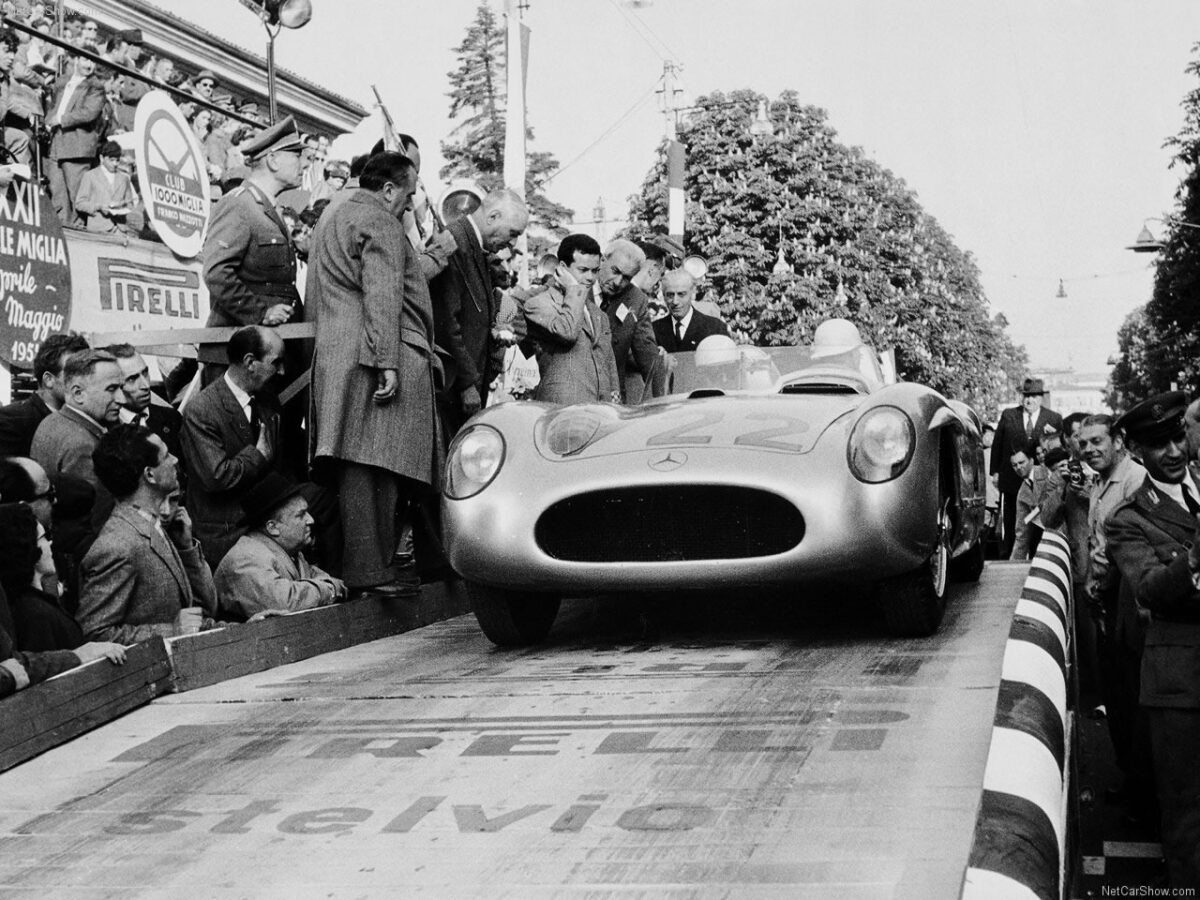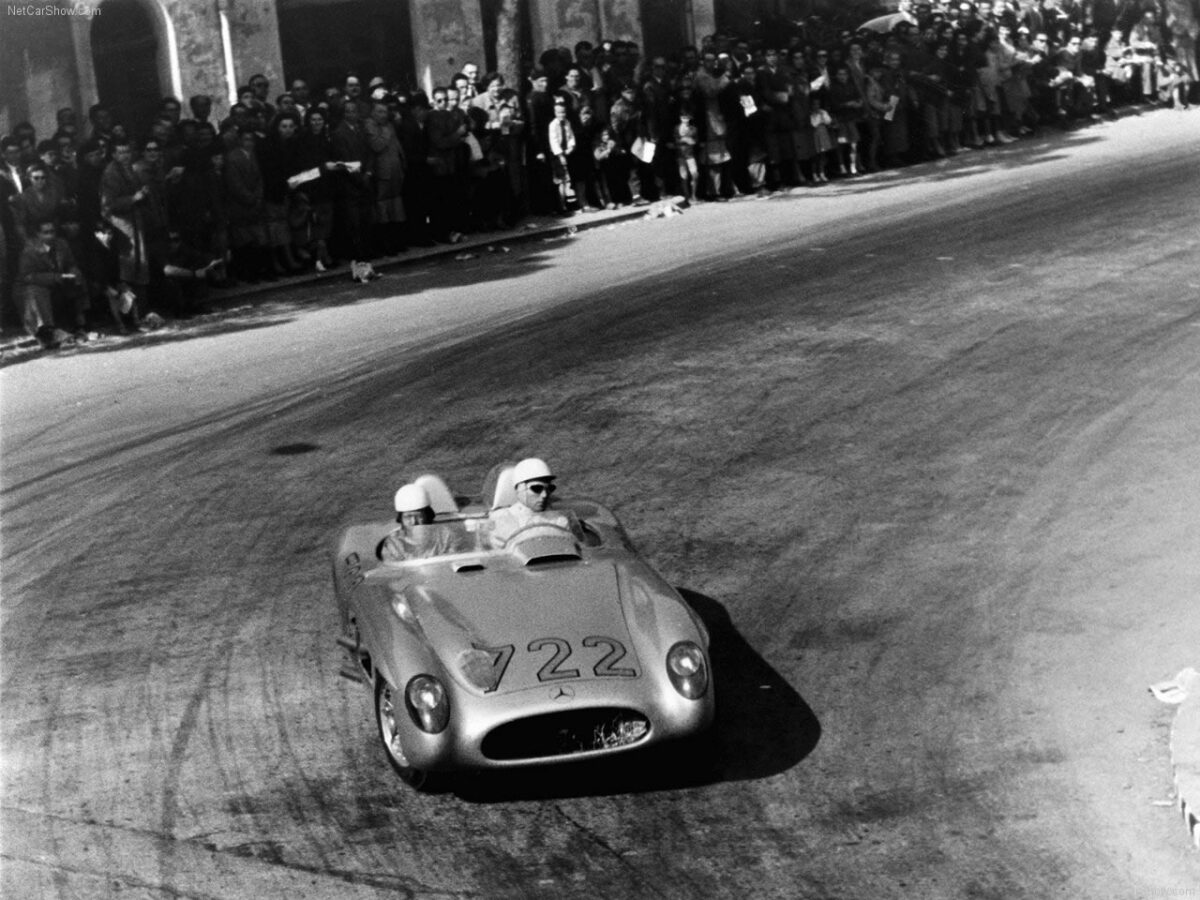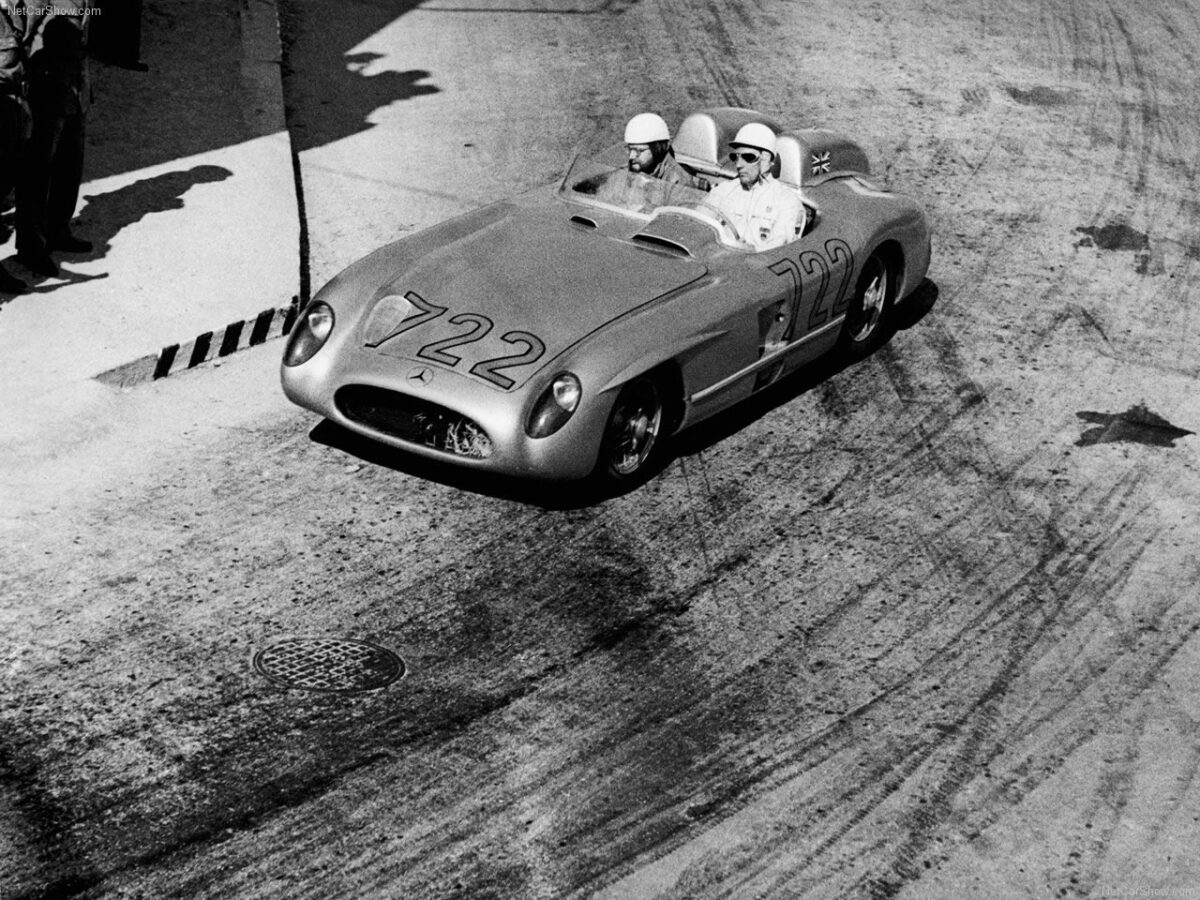Legend
Known for his brash, puckish persona, Stirling Moss won 212 of his 529 races, including 16 Grand Prix victories, but never won the Grand Prix Championship title. In the 1950s, small boys wanted to be Stirling Moss, and so did men.
Sir Stirling Moss
Born 1929
Sir Stirling Craufurd Moss, OBE (born 17 September 1929) is a British former Formula One racing driver. An inductee into the International Motorsports Hall of Fame, he achieved success in several categories of competition and has been described as “the greatest driver never to win the World Championship”. Moss finished as championship runner-up on four occasions and third a further three times between 1955 and 1961.
Early life
Moss was born in London, the son of Aileen (née Craufurd) and Alfred Moss, a dentist of Bray, Berkshire, where Stirling was raised at Long White Cloud house on the right bank of the River Thames. Alfred was an amateur racing driver who had been placed 16th at the 1924 Indianapolis 500. Stirling was a gifted horse rider as was his younger sister, Pat Moss, who became a successful rally driver and married Erik Carlsson.
“Better to lose honourably in a British car than win in a foreign one.”
— Stirling Moss
Moss was educated at independent schools; Shrewsbury House School (Surbiton) Clewer Manor Junior School and the linked senior school Haileybury and Imperial Service College. All were for boys (but the latter are now co-educational except for Shrewsbury) and located at Hertford Heath, near Hertford.
Racing career
Moss, who raced from 1948 to 1962, won 212 of the 529 races he entered, including 16 Formula One Grands Prix. He would compete in as many as 62 races in a single year and drove 84 different makes of car over the course of his racing career, including:
- Cooper 500
- ERA
- Lotus
- Maserati
- Mercedes-Benz
- Porsche and Vanwall single-seaters
- Aston Martin
- Maserati
- Ferrari
- Jaguar and Mercedes-Benz sports cars
- Jaguar saloons
Like many drivers of the era, he competed in several formulae, often on the same day.
He preferred to race British cars, stating, “Better to lose honourably in a British car than win in a foreign one.” At Vanwall, he was instrumental in breaking the German/Italian stranglehold on F1 racing (as was Jack Brabham at Cooper). He remained the English driver with the most Formula One victories until 1991 when Nigel Mansell overtook him after competing in more races.
Formula One
Moss’s first Formula One victory was in the 1955 British Grand Prix at Aintree, a race he was also the first British driver to win. Leading a 1–2–3–4 finish for Mercedes, it was the first time he beat Fangio, his teammate and arch rival, who was also his friend and mentor.
It has been suggested that Fangio sportingly allowed Moss to win in front of his home crowd. Moss himself asked Fangio repeatedly, and Fangio always replied: “No. You were just better than me that day.” The same year, Moss also won the RAC Tourist Trophy, the Targa Florio (sharing the drive with Peter Collins), and the Mille Miglia.
Epic drive
In 1955 Moss won Italy’s thousand-mile Mille Miglia road race, an achievement Doug Nye described as the “most iconic single day’s drive in motor racing history.” Motor Trend headlined it as “The Most Epic Drive. Ever.”
Moss, then 25 years old, drove one of four factory-entered Mercedes-Benz 300 SLR sports-racing cars. Based on the W196 Grand Prix car, they had spaceframe chassis and magnesium-alloy bodies, and their modified W196 engines ran on a mixture of petrol, benzene, and alcohol. The team’s main race rivals were the factory-entered Ferraris of Piero Taruffi, Eugenio Castellotti, Umberto Maglioli, and Paolo Marzotto.
Journalist Denis Jenkinson was Moss’s navigator. He had intended to go with John Fitch, whose idea it had been to take a navigator, but when Mercedes assigned a 300 SL to Fitch, the American agreed to Jenkinson riding with Moss in the faster SLR.
Jenkinson had come up with the idea of race notes in the form of a roller map of the route on which he had noted its hazards — an innovation that helped Moss compete against drivers with greater local knowledge. Jenkinson used hand signals to tell him about the road ahead. Radio communication had proved ineffective when they tried it, because when Moss was fully concentrated on his driving he was oblivious to Jenkinson’s voice.
“The most iconic single day’s drive in motor racing history.”
— Doug Nye
Fangio, who regarded the race as too dangerous for passengers, drove his SLR alone, as did Karl Kling. Hans Herrmann drove the fourth car with mechanic Herman Eger as passenger.
The race was a timed event, and competitors started singly at one-minute intervals. Moss’s Mercedes left the starting ramp in Brescia at 7:22 a.m. (hence the car’s race number 722). Castellotti’s Ferrari left one minute later, and Taruffi’s at 7:27.
After about 90 miles, as Moss approached Padua at 175 mph he saw in his mirror that Castellotti was closing fast. When Moss misjudged a corner and collided with some straw bales Castellotti went past and built an increasing lead. After 188 miles of racing the Italian had to stop in Ravenna to replace the Ferrari’s tyres, and fell behind again. Marzotto’s Ferrari started well but the tread separated from a tyre at over 170 mph and he had to withdraw from the race because the spare turned out to be the wrong size.
Nearing the Adriatic coast, Jenkinson’s spectacles were blown off by the slipstream when he vomited over the side of the Mercedes; he carried a replacement pair. Arriving in Rome, he and Moss were told they were leading from Taruffi, Herrmann, Kling, and Fangio, but from then on they had no way of knowing whether any of their rivals had gone ahead on elapsed time. Soon after Rome, Kling’s race ended when he went off the road avoiding spectators and crashed into a tree.
“The most epic drive. Ever.”
— Motor Trend
When Moss and Jenkinson finally arrived at the finish in Brescia they learned that Castellotti’s Ferrari had retired with transmission trouble and they had won. Fangio took second place, nearly 33 minutes slower, his Mercedes delayed by engine trouble and running on only seven cylinders by the end. Maglioli, in the sole surviving factory-entered Ferrari, took 45 minutes longer than Moss and finished 3rd.
Moss’s time of 10 hours, 7 minutes and 48 seconds, and his average speed of 98.53 mph for the 1000 miles, set course records that still stand. The race was discontinued two years later.
Before the race, he had taken a “magic pill” given to him by Fangio, and he has commented that although he did not know what was in it, “Dexedrine and Benzedrine were commonly used in rallies. The object was simply to keep awake, like wartime bomber crews.” After the win, he spent the night and the following day driving his girlfriend to Cologne, stopping for breakfast in Munich and lunch in Stuttgart.
Later years
Although ostensibly retired from racing since 1962, Moss did make a number of one-off appearances in professional motorsport events in the following two decades. He also competed in the 1974 London-Sahara-Munich World Cup Rally in a Mercedes-Benz, but retired from the event in the Algerian Sahara.
The Holden Torana he shared with Jack Brabham in the 1976 Bathurst 1000 was hit from behind on the grid and eventually retired with engine failure. Moss, at the wheel of the Torana when the V8 engine let go, was criticised by other drivers for staying on the racing line for over 2/3 of the 6.172 km long circuit while returning to the pits as the car was dropping large amounts of oil onto the road. He also shared a Volkswagen Golf GTI with Denny Hulme in the 1979 Benson & Hedges 500 at Pukekohe Park Raceway in New Zealand.
In 1980 he made a comeback to regular competition, in the British Saloon Car Championship with the works-backed GTi Engineering Audi team. For the 1980 season Moss was the team’s number two driver to team co-owner Richard Lloyd. For the 1981 season Moss stayed with Audi, as the team moved to Tom Walkinshaw Racing management, driving alongside Martin Brundle.
Throughout his retirement he raced in events for historic cars, driving on behalf of and at the invitation of others, as well as campaigning his own OSCA FS 372 and other vehicles.
On June 9, 2011, during qualifying for the Le Mans Legends race, Moss announced on Radio Le Mans that he had finally retired from racing, saying that he had scared himself that afternoon. He was 81.
Death
Moss died quietly on Sunday April 12, 2020 at his home in London as one of his sport’s great legends. He was 90 and had been ill for some time.
“It was one lap too many,” his wife, Susie, told The Associated Press. “He just closed his eyes.”
Moss was a modern-day St. George, upholding the honor of England by often driving English cars, even though German and Italian ones were superior. Polls showed he was as popular as the queen.
In the 1950s, small boys wanted to be Stirling Moss, and so did men. Boys saw him as the swashbuckling racecar driver whom many considered the best in the world. Men saw this and more: Moss made more than $1 million a year, more than any other driver, and was invariably surrounded by the jet-set beauties who followed the international racing circuit.
Moss said courage and stupidity were pretty much synonymous, and may have proved it in a succession of spectacular accidents: seven times his wheels came off, eight times his brakes failed. He was a racer, he insisted, not a driver.
Notes
- Images: Copyright © 2015 Mercedes-Benz
- Source: Mercedes-Benz USA Public Relations
- Source: The New York Times
